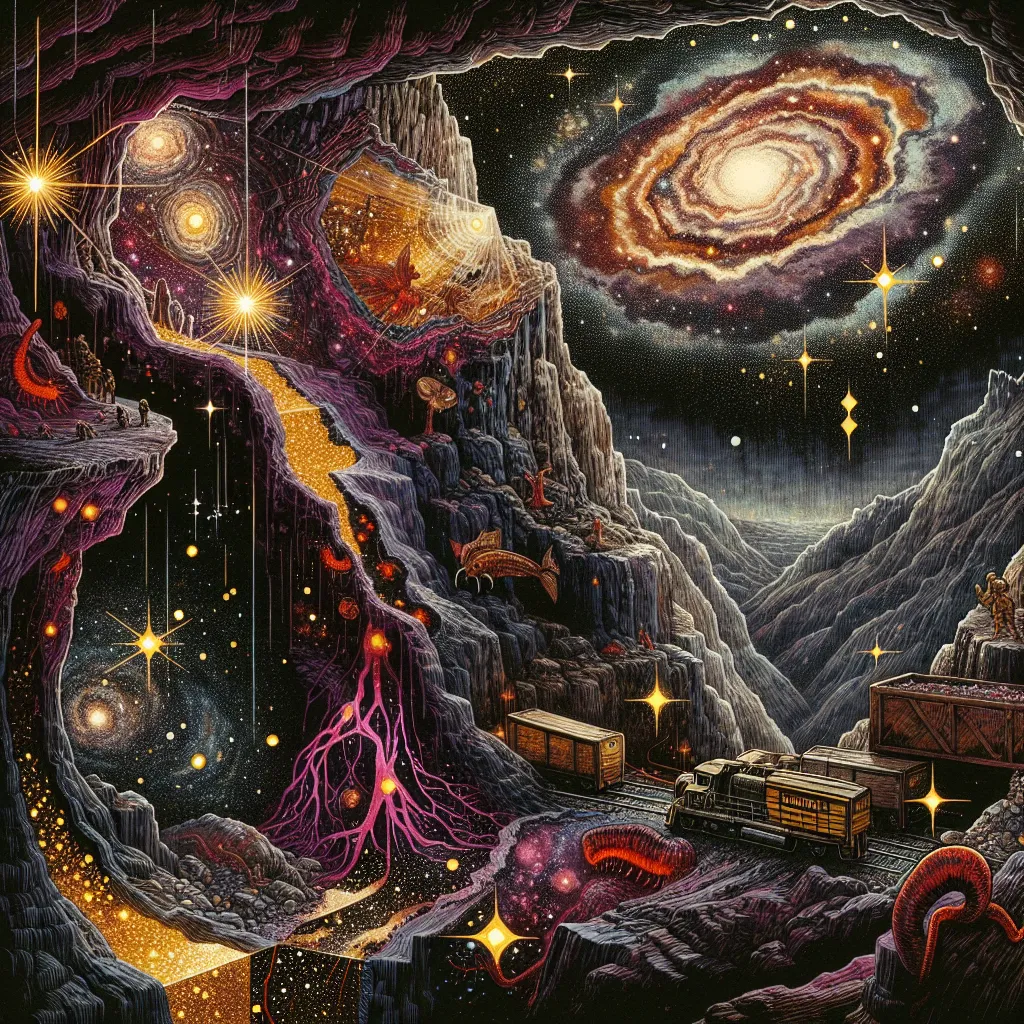Hidden 3.9 kilometers beneath the surface of South Africa, lies the world’s deepest mine, a feat of human determination. It’s a place few dare to explore since it pushes the limits of physical endurance and heat tolerance. The temperature down there is scorching, hitting at least 60 degrees Celsius, hot enough to burn your fingers. The immense weight of nearly four kilometers of rock above adds a constant threat of collapse. Yet, the risks are deemed worth it for what lies hidden in the unassuming rocks.
Trapped in the earth for 2.8 billion years, hot water aided in creating something extraordinary. This water, dating back to our planet’s formation, cracked the rocks and left behind microscopic mineral particles. Over time, these particles formed quartz veins speckled with gold. It’s like real-life alchemy. Gold has been a source of fascination and value for humans for millennia. It’s a metal that doesn’t tarnish, discolor, or crumble. Incredibly malleable, an ounce can be hammered into a 90-square-meter sheet, and its beauty is unrivaled.
The gold we see today, including that in your wedding ring, began its journey billions of years ago. Far from Earth, amidst the chaos of exploding stars known as supernovas, atoms fused into gold. These minuscule gold particles blasted into space, combining with space debris to form our planet. Now we extract this cosmic dust from the depths of the Earth.
The yield from these rocks is meager; one ton might produce less than a sugar cube of gold. But there’s more down here than precious metal. Hidden within the crevices of these rocks are some of the deepest life forms found on land. These life forms include mysterious microbes that live without sunlight, oxygen, or typical nutrients by eating the rocks themselves. Among them are worms, rightly dubbed “devil worms,” adding to the eerie yet fascinating ecosystem miles beneath the surface.
It’s a strange, hostile world down there, but it’s unbelievably rich in history and science, showing us just how enduring and adaptable life can be.






